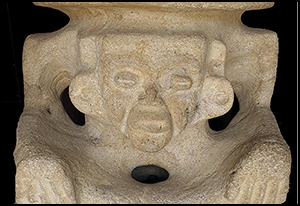Crossref Citations
This article has been cited by the following publications. This list is generated based on data provided by
Crossref.
Smith, Michael E.
2017.
The Teotihuacan Anomaly: The Historical Trajectory of Urban Design in Ancient Central Mexico.
Open Archaeology,
Vol. 3,
Issue. 1,
Murakami, Tatsuya
Kabata, Shigeru
López, Julieta M.
and
Phillips, Paige
2018.
A Multi-Method Approach to Reconstructing Occupational History and Activity Areas: A Case Study at the Formative Site of Tlalancaleca, Central Mexico.
Journal of Field Archaeology,
Vol. 43,
Issue. 8,
p.
634.
Kowalewski, Stephen A.
and
Heredia Espinoza, Verenice Y.
2020.
The Evolution of Social Institutions.
p.
495.
Salas Quintanal, Hernán
Velasco Santos, Paola
González Nava, Leonor Alejandra
and
López Miguel, Celia
2021.
La pandemia de Covid-19: significados y consecuencias en los modos de vida en Tlahuapan, Puebla.
Revista Mexicana de Sociología,
Mateu, Marta
Fernández, Hugo
Daneels, Annick
Cabadas, Héctor
and
Piña, Salvador
2022.
Earthen architecture in the Mesoamerican classic period: A micromorphological approach to its manufacture process.
Journal of Archaeological Science,
Vol. 137,
Issue. ,
p.
105525.
Feinman, Gary M.
Carballo, David M.
Nicholas, Linda M.
and
Kowalewski, Stephen A.
2023.
Sustainability and duration of early central places in prehispanic Mesoamerica.
Frontiers in Ecology and Evolution,
Vol. 11,
Issue. ,
Siebe, Claus
Ramírez-Uribe, Israel
Macías, José Luis
and
Böhnel, Harald
2024.
Radiocarbon dating, magnitude, and catastrophic impact of Popocatépetl's Terminal Preclassic “Lorenzo pumice” Plinian eruption and paleomagnetic age constraints on the Nealtican lava flow field (central Mexico).
Journal of Volcanology and Geothermal Research,
Vol. 445,
Issue. ,
p.
107974.
Murakami, Tatsuya
Jurado, Alexander
and
Kabata, Shigeru
2025.
Dating the beginning of urbanization in Central Mexico: a high-resolution chronology of the Middle Formative Period at Tlalancaleca.
Radiocarbon,
Vol. 67,
Issue. 1,
p.
88.
